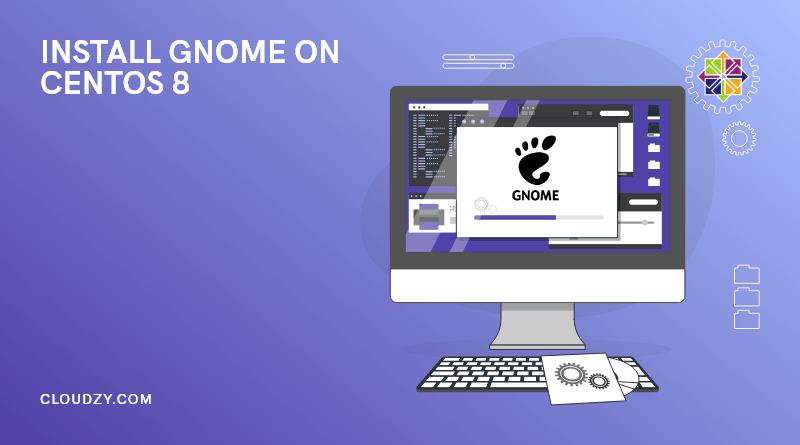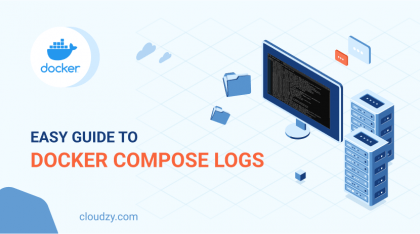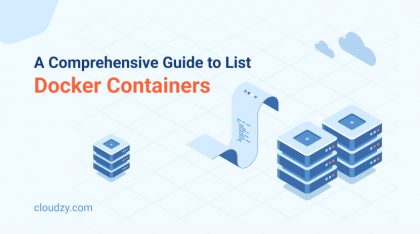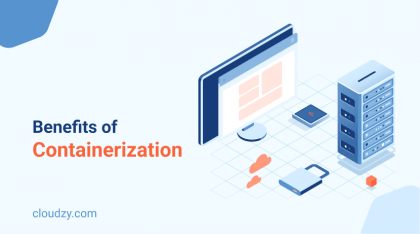As graphical user interface (GUI) is known to be very beneficial in Linux operating systems, experts of the field advise users of Centos 8 to install GUIs. One of these GUIs, which is known to be the best in class, is Gnome. Although installing Gnome on Centos 8 is not such a complicated process, many users experience difficulties while doing so.
For this reason, we decided to provide the following article in which we will fully show you how to install Gnome on Centos 8 by our visual guide. But before anything else, let us give the basic descriptions about Gnome and Centos 8.
 The Ultimate Minimal Server
The Ultimate Minimal Server
Get CentOS 7 or CentOS 8 on your Cloudzy CentOS VPS and run an efficient Linux-based server with minimal resource consumption.
Get a CentOS VPSWhat is Gnome?
Gnome (/ɡəˈnoʊm, ˈnoʊm/) is a desktop available for the Linux (Unix-like) operating system. That is an open-source and free-of-the-charge environment that has managed to become one of the most efficient, stable, and reliable projects while remaining incredibly user-friendly. Regardless of experience, most users can get familiar with this environment with little effort.
Starting with version 3, Gnome Shell is the graphical shell of it Gnome shell is intended to be used on the large screen desktop computers that operated with mouse and keyboard or smaller screen portable computers operated via their touchpad, touchscreen, or keyboard. This graphical shell is a great design created by the Gnome UX design team.
Also Read: Centos VS Ubuntu
The Gnome shell comprises the following functional and graphical elements:
- System Status Area
- Application Switcher
- Application Picker
- Window Picker
- Top Bar
- Active Overview
- Notification and Messaging Tray
- Dash
- Indicator Tray
- Search
The compatibility of this graphical shell of the Gnome will be with Fedora, Arch Linux, openSUSE’s Gnome edition, Sabayon Linux, Mageia, Solaris, Debian, and Ubuntu.

What is CentOS?
CentOS Linux provides a free and open-source computing platform to anyone who wishes to use it. By that, we mean CentOS is a community-supported enterprise operating system, compatible with its upstream source Red Hat Enterprise Linux, from the CentOS Project. Although Red Hat just killed CentOS in 2021 Centos 8 is still working. In this article, we will explain how to install Gnome on Centos 8.
Also Read: Install GUI on CentOS 7
How to install gnome on CentOS 8?
As stated, because of the gnome’s great significance, it is highly recommended that users of centos 8 install Gnome on their platforms. Before starting to install Gnome on Centos 8, we have to note that we will assume users already installed CentOS and have access to the root superuser or user.
Requirements of CentOS 8 install GUI
- System: CentOS 8 / RHEL
- Software: Enabled Package Repository
- Other Requirements: Privileged Access to Your Linux System as Root or Via the Sudo Command
Just like the recent years, CentOS 8 also comes by default with a GNOME desktop environment. Bearing this in mind, when we talk about GNOME desktop installation, we will frequently talk about CentOS 8 workstation. Therefore, in this article, we will tell you how to install Gnome on Centos 8 as a part of the workstation package group. To start the installation, go through the following steps:
Step 1: Log in to the CentOS 8 console
Log in to the CentOS 8 console and enter the command-line shell. Then, execute the following dnf command:
dnf group list

If everything flowed properly, you should see the Workstation group listed as part of the dnf command output.
Also Read : KDE Vs GNOME Vs Xfce
Step 2: Use the “dnf” to install Gnome CentOS 8
Use the dnf command to install the Workstation group:
dnf groupinstall workstation
This might take some time. Press y to continue with the installation:

Step 3: Change the default boot
Once the GNOME desktop installation is completed, change the default boot to the graphical run level. This will ensure that the next time you reboot the system, the system will boot to GUI which in this case is GNOME:
systemctl set-default graphical.target
Step 4: Start graphical desktop after CentOS 8 install GUI
Start graphical desktop session:
systemctl isolate graphical.target
You can alternatively reboot your system if possible.
Congratulations. By performing the above-mentioned steps respectively, you have successfully installed gnome on your Centos 8. Now, you can start to use Gnome on your system and enjoy its exceptional benefits.
 The Ultimate Minimal Server
The Ultimate Minimal Server
Get CentOS 7 or CentOS 8 on your Cloudzy CentOS VPS and run an efficient Linux-based server with minimal resource consumption.
Get a CentOS VPSConclusion
Throughout the above article, we have fully observed how you can install Gnome GUI on Centos 8. We believe that by reading this visual guide, users will have no question regarding the Gnome installation on their Centos 8. However, if you still need further guidelines, we are HERE to help.




![How to Make a Modded Minecraft Server? 👾 [2024 Guide]](https://cloudzy.com/wp-content/uploads/How-to-Host-a-Modded-Minecraft-Server-1-420x234.png)






Is the process of installing a GUI on centos 7 the same as centos 8?
Yes, the process of installing GUI on Centos 7 is the same as Centos 8 as described in this blog.
Thank you so much for taking your time to read our blog 🌻
How can I install gnome on my ubuntu os? Is the process the same?
CentOS and Ubuntu are both Linux-based platforms, and the process for installing Gnome is the same. In case you got any problems with it, please feel free to contact our technical team to ask your questions anytime!
Thank you so much for taking your precious time to read our blog 🌻💛
I use MATE gui but I may switch to Gnome for a change
I did everything as you wrote and everything is working fine, thank you 🙏🙏
Thanks for the great article, is there any other software like Gnome?
I wish you had typed the commands for the ease of use, but well done!
Is Linux really safer than windows? Because with the job I have I am always dealing with malicious soft-wares that either slow down my system or stop it from working properly. I am really considering to start using Linux versions
Can I use Gnome on other Linux distros or it is only designed to be used on centos?
It officially supports all the major Linux distros. With Debian, you will get to enjoy GNOME in its purest glory. But please consider that you won’t get updated to the newest releases as soon as they are available, as is the case with Fedora.
Thank you so much for taking your precious time to read our blog 🌻
I would appreciate it if anyone could explain to me what is the difference between gnome and OSSM?
Thank you so much for taking your time to read our blog 🌻
OSSM is the father of GNOME. The first trajectory model developed at NOAA ERD was written as a command-line Fortran code application. GNOME is written in C++, which was chosen for two reasons:
(1) a graphical user interface to aid ERD responders and outside users in quickly setting up models.
(2) the support of objects in C++, enabling nifty abilities in Diagnostic Mode.
If you want to install gnome on centos6 you can use the following piece of code:
yum -y groupinstall “X Window System” “Desktop” “Fonts” “General Purpose Desktop”
yum -y groupinstall “KDE Desktop”
Thank you for a full and step by step tutorial. I followed the steps and everything is working perfectly
Is gnome something like GUI? Cause I had never heard of it
Thank you so much for taking your precious time to read our blog 🌻
GNOME (GNU Network Object Model Environment, pronounced gah-NOHM) is a graphical user interface (GUI). It’s a set of computer desktop applications for users of the Linux OS. With GNOME, the user interface can, for example, be made to look like Windows or like Mac OS.